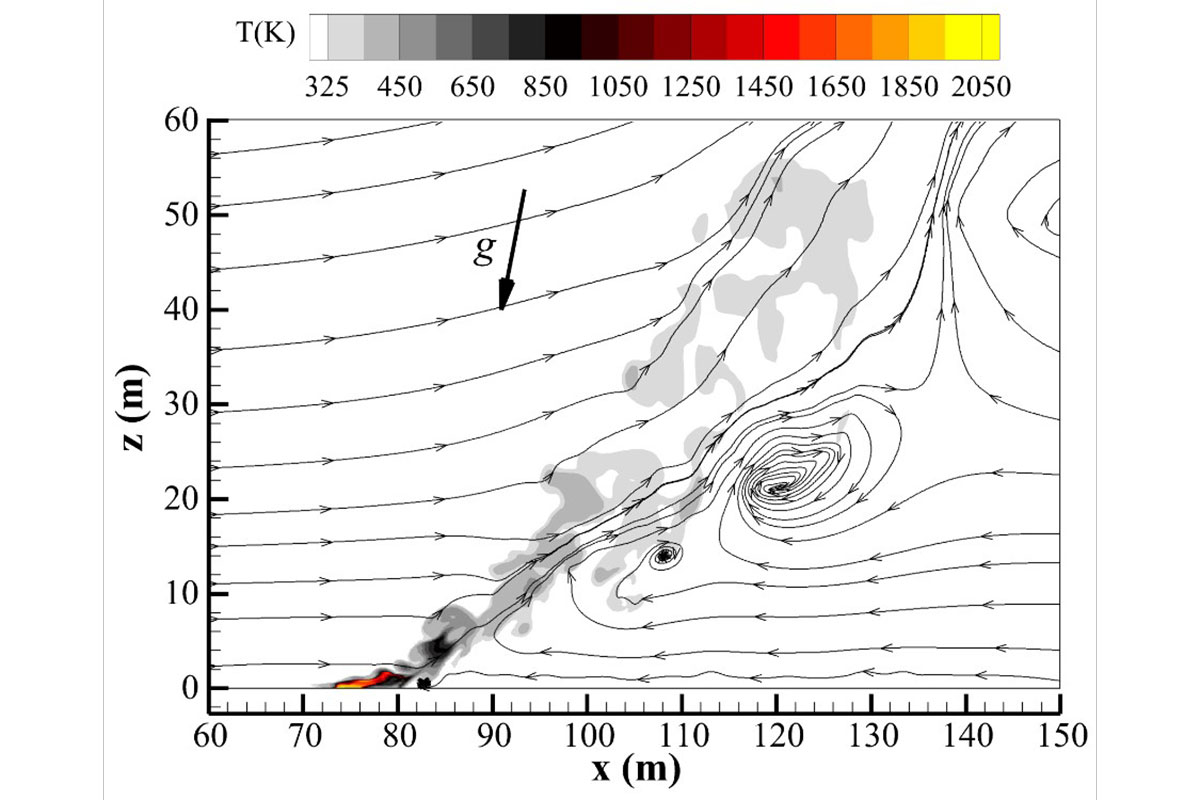Physics-based Simulation of Extreme Wildfire Behavior on Sloping Terrain
Project Details
- Student(s): Jad Samia
- Advisor(s): Dr. Gilbert Accary
- Department: Industrial & Mechanical
- Academic Year(s): 2024-2025
Abstract
This work delves into the complexities of wildfire behavior on sloping terrain, where the combined effect of crosswind and slope acting in the same direction substantially influence fire behavior, rate of spread, and fire intensity. Fire regime depends on Byram’s convective number that was modified to account for slope effect (Morvan and Accary 2024), For steep slopes, this correction results in a convective number that is significantly different from the formulation proposed by Nelson (2015). To test the effectiveness of the proposed Byram’s number expression, Large Eddy Simulations of shrubland fires were carried out using a 3D fully-physical CFD fire simulator (FireStar3D) under various terrain slopes and prevailing crosswind speeds, covering both wind-dominated fire regime and plume-dominated one. Results showed that the proposed modification of Byram’s convective number allows a better description of the obtained fire regime. The heat transfer mechanisms governing fire propagation were described, highlighting in particular the role played by the convective cooling of unburnt vegetation in the case of a plume-dominated fire as the fire draws an adverse air flow in the opposite direction of fire propagation.
